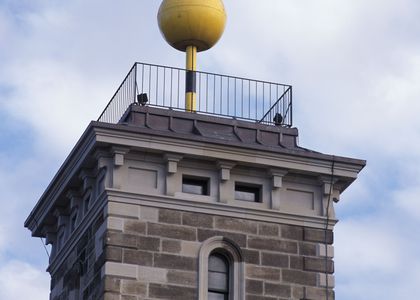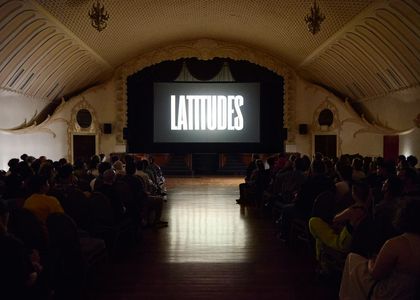To help you learn about the southern night sky, Sydney Observatory provides a guide and a sky map each month.
This month, go on a journey through June’s cold and beautiful night sky with Geoff Wyatt, Sydney Observatory’s Education Program Producer and longtime astronomy buff.
Listen to the Audio
You can subscribe to the podcast on iTunes or directly download this month’s guide to your favourite audio listening device.
See the Sky Chart
We provide a sky chart for June 2019 (PDF) which shows the stars, constellations and planets visible in the night sky from anywhere in Australia. To view PDF star charts you will need to download and install Adobe Acrobat Reader if it’s not on your computer already.
Read the Guide
Hello there, this is Geoff, one of the team at Sydney Observatory which is part of the Museum of Applied Arts and Sciences and I’m going to take you on a tour for what’s visible for the month June.
You will need some supplies for this tour that will make it much easier to follow. The main one is a star map. You can download the star map from our website or in the Australasian Sky Guide 2019 by Dr Nick Lomb.
Perhaps 40-50 minutes after sunset go outside and find somewhere with as clear a view as you can get of all 4 card directions. I want you to start by looking to the West. What do you see? Do you see any stars? Is one much brighter than the others? How do you know they are stars and more importantly what are stars? For a long they simply accepted them as distant objects. It’s only relatively recently that we have discovered that each of these twinkling points of light is a nuclear engine of unimaginable fury converting millions of tonnes of fuel into energy every second for millions to billions of years. Up close every one is a deadly source of heat and radiation but across the gulf of space and time they help us navigate, they inspire, they act as a canvas for pictures and as characters in stories.
The first character or star we will look at may still be hanging in the fading glow of sunset. It is the brightest star in the night sky and is known as Sirius the dog star. It’s roughly 20 deg above the horizon but is there a convenient way for you to measure this? Yes there is. Simply hold out your hand and spread your fingers. From pinkie tip to thumb tip it is approximately 20 degrees regardless of your age and size. Sirius is just under 9 light years away and I want to you think about that. It doesn’t matter what star or planet you’re looking at in the sky, you’re seeing them as they were not as they are. So, this means you’re seeing it as it was 9 years ago, you’re looking back in time. It’s about twice the diameter of the Sun and about 25 times as bright. Being close to the horizon it’s about 30% fainter than it is when overhead because of the thicker atmosphere as you look toward the horizon.
Thousands of years ago Egyptians used this star to work out the length of the year to within 11 minutes of what we use today for the length of the tropical year.
If you’ve ever played dot-to-dot here is your first chance tonight to hunt for patterns within the stars, or constellation. Sirius marks the chest of the big dog. Its neck and head lower at the moment consist of fainter stars that are very difficult to see at the moment so use your imagination to fill in the missing parts. From Sirius go ever so slightly to the left for the front legs then back up from Sirius to the next bright star for the bottom splitting off for the rear legs and tail, did I mention a star map would help?
Turn to the left a little and go a little higher to 30 degrees or one hand span and one clenched fist. Here you will see the 2nd brightest star in the night sky. This one is much bigger than Sirius. It’s about 310 light years away, 70 times the diameter and 10,000 times brighter than the Sun. The extra distance means we see it as the second brightest star in the night sky but the brightest star in Carina the keel. This is a constellation that was part of a much larger one called Argo Navis, the ship that carried Jason and argonauts in search of the golden fleece.
Again turn left so you’re facing south and up to 60 degrees, or three hand spans to see a small bright and famous constellation known as Crux or the Southern Cross. At this time of year it clearly looks like its namesake, a Christian cross but to different communities around the world it looks like different things. To some it is an anchor, a footprint of an eagle, a stingray or an emu head. Different cultures have different ideas. Most of our sky stories have come from the Middle East thousands of years ago via Egypt and Greece but that doesn’t mean they are the only way to see things. In Australia there is ever increasing awareness of the rich Indigenous knowledge of the sky that predates all other. Where possible I would urge everyone to engage with community and…listen.
We know this is the real cross because if you look to its left, as we see it now, you can see two bright stars that point toward the cross. The more distant is the third brightest star in the night sky and the closet to us after the Sun at 4.3 light years. It is known as alpha Centauri, Rigel Kentaurus or Toliman. Even a modest telescope will resolve or split this twinkling light into two stars similar to the Sun that are locked in a gravitational dance of about 80 years to orbit each other. Further away and too small to be seen is a smaller dwarf star in orbit of these two in orbit of each other. This little star is called Proxima Centauri as it is this one that comes closer than any other, our neighbour. This is a rich part of our galaxy, the Milky Way to scan if you have a small telescope or a pair of binoculars.
Leaving the Southern Cross turn the left until you see one bright golden orange star about 30 degrees above the horizon. That star is the brightest star in the constellation of the scorpion. It is the 15th brightest star in the night sky and only about 12 million years old. At 800 times the diameter of the Sun and 15 times its mass it must be a young massive star that is already showing signs of running low on fuel. For such a star it can do only one thing and that is (pop) explode as a supernova sometime within the next few million years. It is called Antares meaning rival of Mars as the red planet and this star come close together every few years. Concentrate on Antares and you should see fainter stars equidistant on either side that make a relatively straight line. Go toward the left and up and look for T-junction from this line of three. These stars represent the head and the claws of the scorpion. Go back past Antares which is the heart and follow a sweeping curve of stars that make a hook or a tail. With the star map as a guide it will be much easier to see. Away from the cities and towns on a moonless night this area is the brightest part of the Milky Way and is quite literally breathtaking. The core of our galaxy with its monstrous black hole Sagittarius A* (pronounced Sagittarius A star) right on the horizon at this time, not that you can ever actually see it anyway.
As you may suspect continue to your left to the north east and look for the 4th brightest star in the night sky at roughly 26 degrees above the horizon. It is classed as a red giant and is the brightest star in the northern sky and is called Arcturus. Being only about 38 light years away, 25 times diameter of the Sun and 170 times brighter makes it conspicuous. Despite its size it’s only slightly only slightly more massive than the Sun which tells us it is at the end of its life and will shortly die by gently shedding the outer layers to expose the hot nuclear heart that will then cool over billions of years as a white dwarf. A similar fate awaits the Sun but not for another few billion years.
Go up from Arcturus to about 60 degrees and the 16th brightest star. It’s a blue white star again roughly 12 million years old and 25,000 degrees on the surface at about 260 light years away. It is called Spica. It is the brightest star in the constellation of the Virgo. Like so many other stars, it is multiple star. The two stars that we see as one are both bigger than the Sun and can only be separated by looking at their spectra or rainbows of light. It is a well studied star even back to the time of Hipparchus of Nicea in the 2 century BCE as it is close the ecliptic which is the line along which the planets, Sun and Moon seem to move. It is thought that this is the star that helped him identify the precession of the equinoxes, a 26,000 year wobble of the Earth’s axis caused by the gravitational pull of the Sun and the Moon.
From Spica head down and to your left again to the NNW and look for what appears to be a faint upside down question mark using a map as a guide. It may not be easy to see but it’s worth a try as it represents the head and chest of Leo the Lion another of the zodiacs.
Our last stop for the evening is a star about 11 light years away in the WNW and about 20 degrees above the horizon. It too is a binary star with one a little bigger and one a little smaller than the Sun. To the naked eye they appear as the 8th brightest star at night, Procyon. Its name comes from Greece and means ‘before the dog’ as it rises before the brightest star at night Sirius where we started our tour.
Special events for June 2019
Phases of the Moon.
New Moon is on Monday the 3rd at 8:02pm AEST
First quarter Moon on Monday the 10th at 3:59pm
Full Moon on Monday the 17th at 6:31pm, and
Last quarter on Tuesday the 25th at 7:46pm.
The Winter solstice is on Saturday the 22nd with the Sun reaching its most northerly point as we see it at 1:54am. This marks the day of the least amount of daylight.
The night sky is dominated by Jupiter low in the east in the 13th zodiac of Ophiuchus. Jupiter will be at its brightest on the 10th and 11th when it is overhead at midnight. On the night of the Full Moon the two will be close together.
On the 18th and 19th immediately after sunset Mercury and Mars will be less than one Moon diameter apart in the western sky.
Saturn starts to reappear in the evening sky later in the month in the constellation of Sagittarius.
The morning sky is dominated by the goddess of love and beauty, Venus as it moves from Aries into Taurus.
Don’t forget you can purchase your copy of the Australasian Sky Guide at most bookstores from our website www.maas.museum and of course at the Powerhouse Museum and Sydney Observatory.
We love to interact with our audience and I especially with teachers so please leave any comments below or email me at learn@maas.museum We have astronomy, weather and Australian Indigenous astronomy programs for school children from Early Stage 1 through to Stage 6 spectroscopy and Relativity. My name is Geoff and I hope you’ve enjoyed this tour of the June night sky.



Hello Jake, thank you for the kind words and I hope it is of some use for your learners. If you have any suggestions to make these podcasts even better please let me know.
Kind regards
Geoff
this ia absolutely amazing. Im trying to write a Y7 lesson plan on star gazing and this is a great tool/resource.
thank you